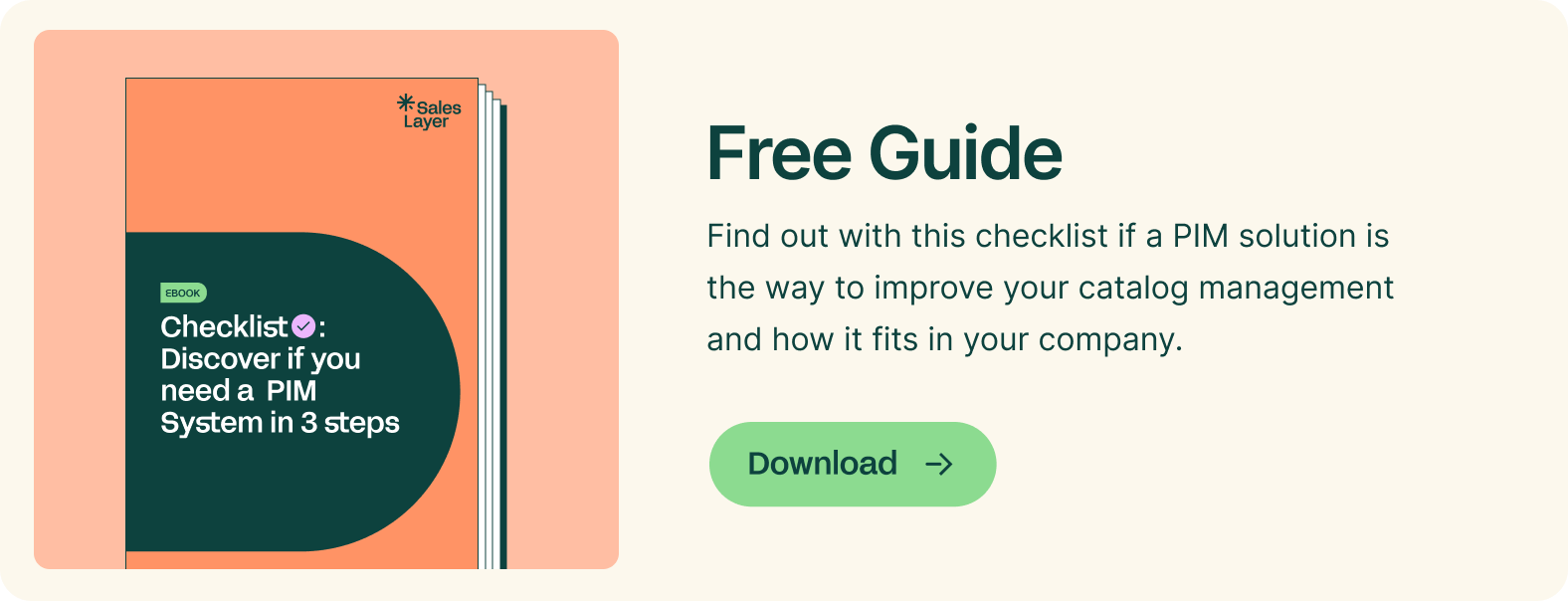
The demand for product information management (PIM) software is one of the fastest growing trends within the tech market right now.
With ecommerce sales increasing by 14.7% year-on-year, businesses and marketing teams need to be equipped with the right tools to meet customer demand in an efficient and agile way.
The cost of poor product data
Poor product data has a significant impact on businesses that can drive down sales conversions and brand reputation through all the channels you sell on. This can be broken down into four impact areas:
-
Wasted time: Spreadsheets and/or other traditional documents are manual, less efficient and create the possibility of duplicate files and data inconsistencies
-
High margin of error: Managing product data manually leads to more errors in data, poor channel synchronization, and complex interdepartmental communication.
-
Poor efficiency: More time and manpower is needed when working manually, wasting valuable team resources.
-
Lack of data enrichment: Data optimization is too complex to tackle manually when catalogs contain huge quantities of products, metadata, images, technical specifications, multiple languages and more.
How to measure the ROI of a PIM system
Product data ROI can be measured using the following formula:
ROI = (Net Profit - Investment Costs) ÷ Investment Costs x 100
There are also several other useful metrics to evaluate your companies product information management ROI:
-
Total sales
-
Conversion rates
-
Return rates
-
Time-to-market
-
Total costs
-
Data update time
Types of analysis on PIM ROI
Analysis of the ROI of a PIM can be performed in two ways: quantitative and qualitative.
Quantitative analysis of the ROI of a MIP
Quantitative analysis looks at sales conversion, team productivity and order status. PIM benefits can translate into higher average sales value, lower product returns and complaints, and quicker task completion time.
Qualitative analysis of a PIM's ROI
Qualitative analysis looks at the customer experience, satisfaction levels and market positioning. PIM improves the quality of product information, and this results in lower cart abandonment rates, increased customer loyalty and higher ranking on search engines.
This comes alongside the internal metric of talent retention within the team. By implementing a PIM as a centralized source of truth, your team will be able to work better and more efficiently.
How a PIM can boost your ROI
Increased productivity
By reducing the time your team spends gathering data, generating spreadsheets and updating them manually, your team can increase productivity and devote more manpower to branding and sales improvement. Implementing a PIM also reduces training time for workers, with Sales Layer being named G2’s easiest to use PIM in 2022.
Faster time-to-market
With instant catalog generation, you can launch new products and collections in less time and keep up to date with changing market trends and demands.
Data enrichment
PIM ensures all your product information is correct, complete, and error-free. It enriches the content and manages it across all needed languages and regions.
Increased satisfaction
With higher quality product information comes increased consumer trust. With the ecommerce world increasing year on year, consumers are more likely to repeat purchase from a trusted source.
Fewer returns
48% of online consumers return unsatisfactory products rather than replacing or exchanging. This creates huge expenses for businesses. PIM reduces return rates by ensuring customers receive accurate product data at all stages of the shopping process, which ensures your customers receive the product they expect.
PIM has a positive ROI for any ecommerce business, improving the quality of product information, customer experience, brand reputation and sales generation.
Get started with a 30-day free trial of Sales Layer PIM today, your key to success on the digital shelf.







.png?width=520&name=Blog%20Partner%20(3).png)

.png?width=520&name=Blog%20Partner%20(1).png)


